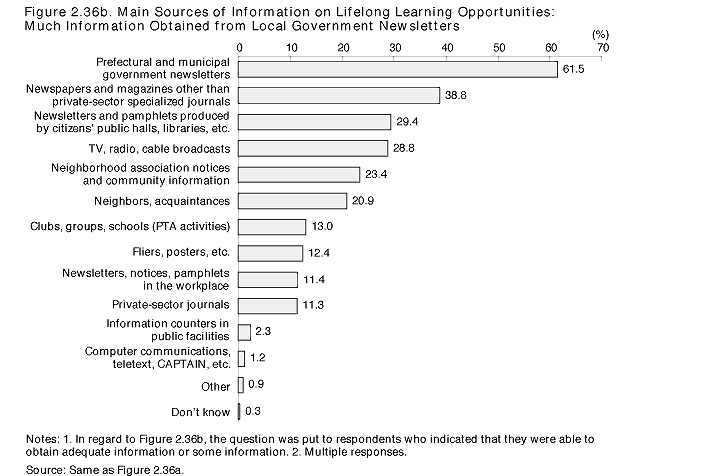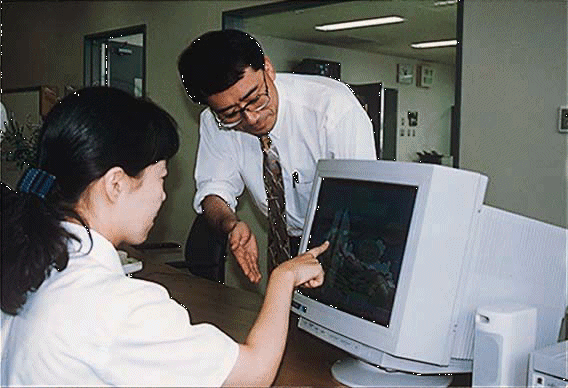| Home > Policy > White Paper, Notice, Announcement > White Paper > JAPANESE GOVERNMENT POLICIES IN EDUCATION, SCIENCE, SPORTS AND CULTURE 1996 > Priorities and Prospects for a Lifelong Learning Society Chapter 2 Section 2 1 | ||
Central and local government organizations and other groups have undertaken various programs to enhance understanding of the significance of lifelong learning and create a culture that encourages learning activities. Since fiscal 1989 MESSC has sponsored National Lifelong Learning Festivals in cooperation with local governments. Prefectures and municipalities are making similar efforts.
The provision of information to learners is an important way of supporting independent learning efforts. The results of the 1992 "Public Opinion Survey on Lifelong Learning," however, indicate that only 31.1% of respondents felt that they had adequate access to information about learning opportunities or were able to obtain some information. A much higher percentage, 65.8%, reported that they could obtain little or no information ( Figure 2.36a ).
The same survey shows that 61.5% of respondents obtained information from newsletters distributed by prefectural or municipal governments, 38.8% from newspapers and magazines other than private-sector specialized journals, and 29.4% from newsletters and pamphlets produced by citizens' public halls, libraries, and so on ( Figure 2.36b ).
As discussed in chapter 1, MESSC provides support for the establishment of lifelong learning information systems by prefectural governments. In fiscal 1995 such systems, including systems developed independently, had been established in 39 prefectures. These lifelong learning information systems provide information on facilities, instructors, learning organizations and groups, learning opportunities, and other aspects of lifelong learning. The information frequently includes data not only from boards of education but also from governors' and mayors' offices as well as other public- and private-sector agencies and organizations. The handling of private-sector information varies according to prefecture, as do the places where residents can obtain information. In some cases information is available only through lifelong learning promotion centers run by prefectural governments, libraries, or citizens' public halls, while in other cases it is possible to access information via computer networks.There is no clear evidence concerning the extent to which these efforts are helping to alleviate the inadequacy of information on learning activities. The fact that the number of users of the system varies from prefecture to prefecture suggests, however, that further work is needed.
Numerous monthly journals providing learning-related information are published in major cities. Recently journals catering to people wishing to find or change jobs or obtain qualifications have appeared on the market. The existence of such publications indicates that there is a demand for access to learning-related information through a wide range of media that reflect the content and targets of that information.



| Back to Top | MEXT HOME |